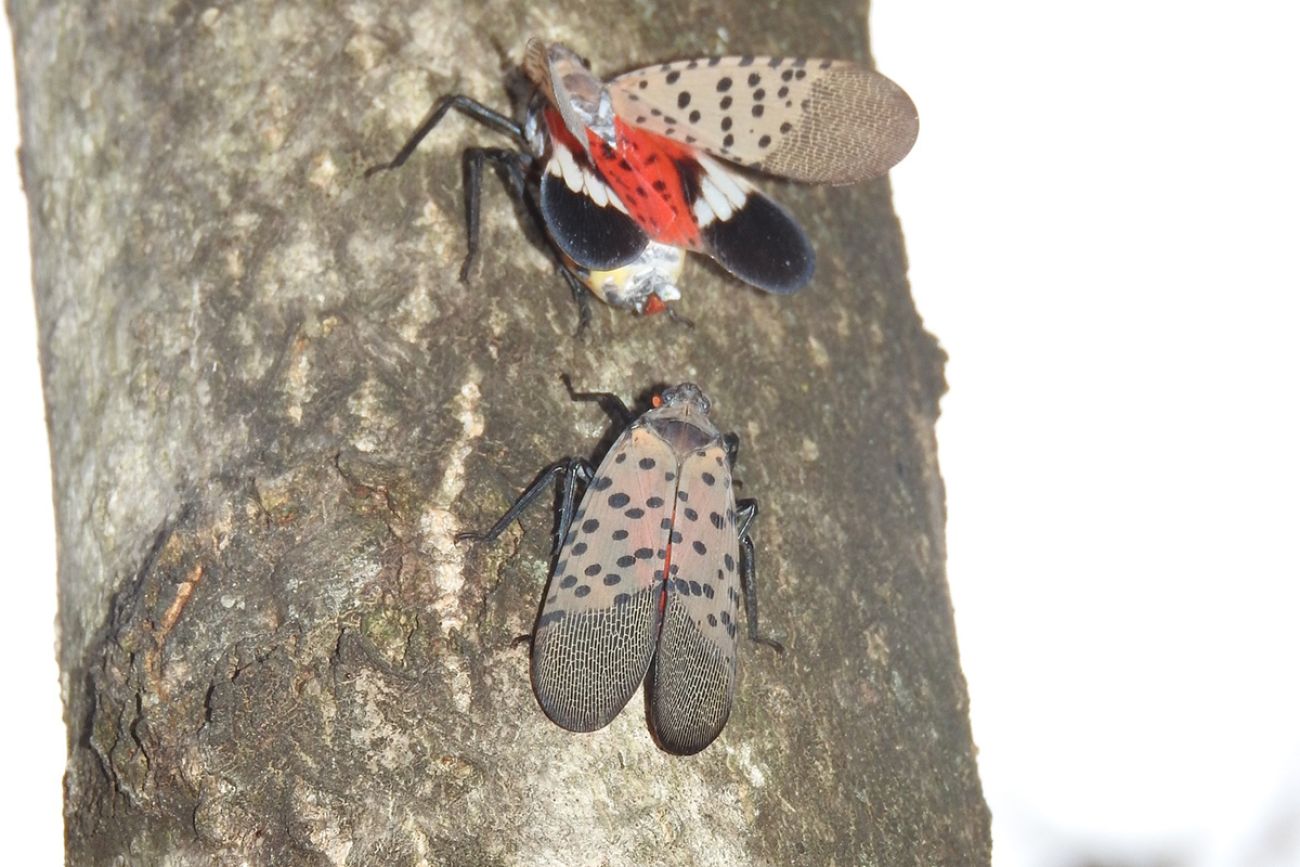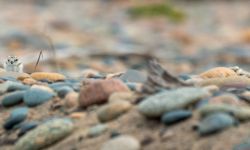Michigan DNR warns residents to squish invasive lanternflies

- Lanternflies have destroyed crops on the east coast and officials want to stop their spread in Michigan.
- The pests were first seen in Pontiac last year.
- Residents are advised to squish and report the invasive bugs, which feed on plants and attract other pests in the process.
State officials in Michigan want residents to be on the lookout for a species of invasive, plant-eating pests — and squish these bugs before they can damage more crops or ruin more neighborhood picnics.
The spotted lanternfly — a white and red insect with black spots that made its first confirmed Michigan appearance in Oakland County last year — can feed on over 70 different plants including grape vines and fruit trees.
The bugs are harmless to humans but suck sap and nutrients from crops, then secrete large amounts of a sugary, sticky, liquid called honeydew that turns into a black, sooty mold. The mold can harm or kill plants and foul surfaces.
Related:
- It’s peak yellowjacket season in Michigan, and they’re as mean as ever
- What's being done about plastic trash getting into the Great Lakes?
- The life of Peanut: Inside the story of the world’s oldest living chicken
The lanternfly also attracts other pests like yellow jackets, flies and ants, which further impact crops.
“When there’s hundreds of them in a tree you feel a mist beneath you,” said David Lowenstein, a consumer horticulture educator at Michigan State University. “It’s kind of annoying to get misted on and realize it’s not rain or a sprinkler but lanternfly urine and honeydew.”
The insect has been swarming New York City and damaging crops in east coast states. Michigan officials want to prevent the same thing from happening here.
Since first confirming a population of spotted lanternflies in Pontiac last year, the Michigan Department of Natural Resources has been managing the area with incesticide and removing the trees to prevent the population from breeding and spreading.
So far, the treatment has prevented the bug from traveling outside the Pontiac area but the department is asking Michiganders to be vigilant and to kill any lanternflies they see.
The department launched a “See it. Squish it. Report it” campaign earlier this summer.
“If they get to Michigan and start populating in large quantities in your neighborhood, then you’re not going to enjoy being outside,” said Joanne Foreman, an invasive species communications coordinator for the department.
She warned that bugs leave their messy sap in trees and on people’s decks and can make it unpleasant to be outside.
Between late summer and early fall, spotted lanternflies reach adulthood and begin mating and laying eggs for next year, which is why they are so active this time of year.
Lanternflies can spread by laying eggs on cars, trailers or other motor vehicles traveling through infested areas.
How to spot a lanternfly
The average lifespan of a spotted lanternfly from egg to adulthood is about one year. The adult lanternflies lay between 30-60 eggs in late fall before the first freeze, when they die off.
Egg masses look like old chewing gum, with a gray, waxy, putty-like coating. Hatched eggs are brownish, seed-like deposits in a straight line, about 1.5 inches long.
The eggs hibernate between April and June, then hatch into nymphs, which range in size from eighth of an inch to a half inch long.
Nymphs, which are black with white spots and develop red patches as they mature, don’t have wings and look similar to beetles.
The bugs reach full adulthood between August and September. By then, the insect is about an inch long. It looks similar to a moth with a lower wing that’s bright red with black spots and an upper wing that has black spots and black and white stripes along its edges.
Lanternflies have a yellow and black abdomen, which is visible when their wings are open.
How to report it
If you spot a lanternfly, the DNR encourages residents to squish it, take a photo of it and report it online.
Michigan Environment Watch
Michigan Environment Watch examines how public policy, industry, and other factors interact with the state’s trove of natural resources.
- See full coverage
- Subscribe
- Share tips and questions with Bridge environment reporter Kelly House
Michigan Environment Watch is made possible by generous financial support from:
Our generous Environment Watch underwriters encourage Bridge Michigan readers to also support civic journalism by becoming Bridge members. Please consider joining today.
See what new members are saying about why they donated to Bridge Michigan:
- “In order for this information to be accurate and unbiased it must be underwritten by its readers, not by special interests.” - Larry S.
- “Not many other media sources report on the topics Bridge does.” - Susan B.
- “Your journalism is outstanding and rare these days.” - Mark S.
If you want to ensure the future of nonpartisan, nonprofit Michigan journalism, please become a member today. You, too, will be asked why you donated and maybe we'll feature your quote next time!






